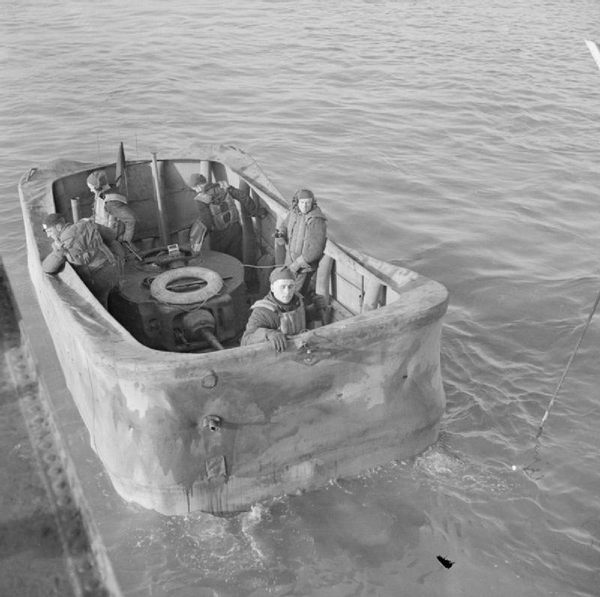The run-up to D-Day was tense, the world hung in the balance and the allies were determined to get Europe back from the Nazis, however, in the lead-up to D-Day, six men would go on to lose their lives in an ambitious training exercise.
One of the original plans for D-Day was to land tanks along with the first troops in Normandy, but getting a ship close enough to the shore to offload the tanks onto the beaches would’ve been tricky. A crazy idea was floated: A series of Valentine tanks would have been fitted with canvases that raised around the tank and displaced enough water to allow the tanks to float.
Several Valentine tanks with the ability to float using canvases were constructed. To practice using the tanks for D-Day, the top-secret Operation Smash was formed. This training exercise was aimed to launch several Valentine tanks off in Studland Bay (an area selected for it’s likeness to Normandy), then the tanks would sail across the sea to the shore, before dropping their floating canvas and ‘capturing’ Studland Bay.
Operation Smash was so important as a dress rehearsal for D-Day, that at a later date, the operation was observed by King George VI, Winston Churchill and General Eisenhower from the nearby Fort Henry.
The whole operation was to start with the floating tanks sailing onto the beach at Studland Bay from the sea using their floating canvases, but there was one problem with the canvases: They were only good for the tanks in calm conditions. In harsh conditions, the canvases simply didn’t have any material strength to resist bad weather.
On April 4, 1944, the top-secret SMASH 1 got underway. Around 30 floating tanks were cast into the sea, all of which immediately started to sail toward Studland Beach.
Suddenly, things started to go wrong, as the weather grew rougher and rougher. Before long, many of the tanks were fighting to float, let alone make it to the beach. For safety, many of the tank crews were ordered to stand on the turrets in case the vehicle suddenly sank, which is exactly what happened. One by one, seven tanks were overwhelmed by the water and sank.
Due to the top-secret nature of the exercise, very few records of this exist—after the event, all official records were destroyed to prevent any information about D-Day from leaking. Eyewitness accounts and personal journals of the disastrous exercise are the only sources information about this disaster.
Lt Robert Ford was one such witness on one of the tanks and recalled the terrifying events: “We were on the surface of the water after coming off the landing craft and becoming increasingly apprehensive. The water was coming in very fast and although we had small pumps, they were just not effective. The weight of the water against the canvas was just too great. We knew we weren’t going to make it. We were still floating and all four of us were standing on the top of the tank. Then a great wave crashed over the top and we sank to the bottom.”
Officially, six men lost their lives and seven tanks were lost.
On D-Day, floating tanks were used to help punch through German reinforcements after the beaches were secured, but not to the same extent as the original plan, this was likely changed due to the fatal lessons learned in Studland Bay.
The tanks now are a popular diving site off the Dorset coast, however, due to most of the tanks being unmarked by buoys, the tanks have received occasional damage with one tank recently having its turret barrel damaged.

